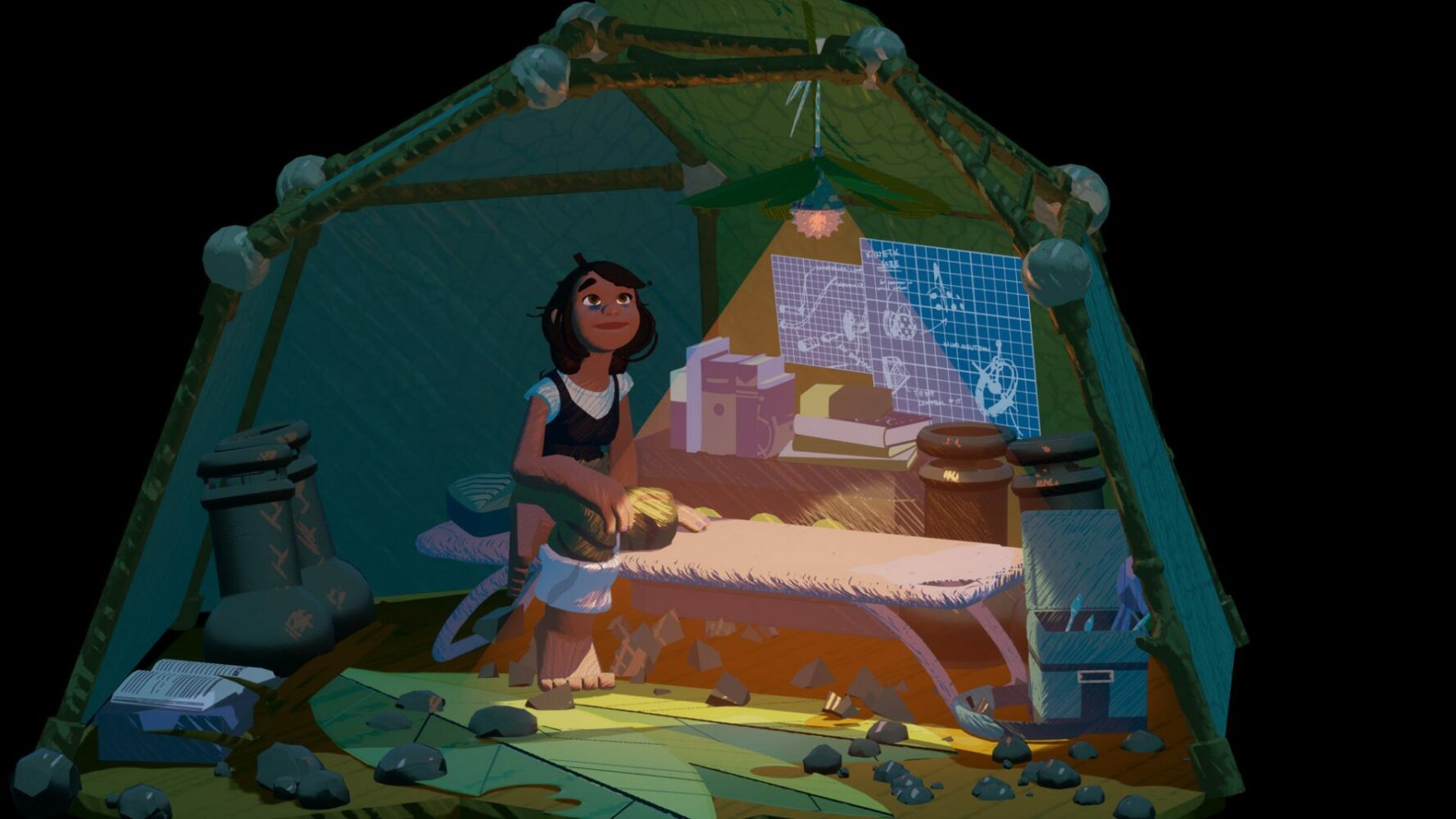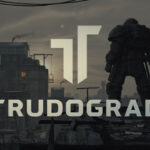Indie game developer, Flight School Studio, has again left their mark and continued to solidify their easily recognizable style with this summer’s release of the action, exploration game Stonefly. The North American development team continues to flex their versatility as Stonefly is a shift from their previous title, the top-down, dungeon crawler, pinball game Creatures in the Well, which was itself a change from the spooky V.R. experience of Manifest 99. The team’s newest endeavour is their most expansive world yet with a heavy focus on exploration, resource gathering, and mechanized combat. There is one thing that connects the three titles and it’s the distinct hand-painted look of the art style of all 3 games. No matter what the genre, Flight School Studio has made it impossible to miss their memorable and easily recognizable visuals.

The game’s protagonist is a girl named Annika, the daughter of a mechanic. Annika works as an assistant to her father and is mainly responsible for gathering resources for what he needs. In order to do this, Annika must pilot her family’s mech to traverse a truly gorgeous world in which bugs are massive and dominate the landscape, while humans exist on a microcosmic level. Through Annika’s own careless actions, the family heirloom mech, which is named after her mother’s name, is stolen. With her father left distraught and guilt washing over Annika, the girl takes it upon herself to retrieve the precious mech from a mysterious figure.
Also Read
Transmogrify PC Review: The Best Way To Defeat An Enemy
A video game protagonist wakes up in an on-fire science lab with nothing but an AI and a high-tech gun to…
Defy the Gods as a Witchy Moon Goddess in Hades 2
Greek-mythology-themed roguelike Hades is getting a sequel, but developer Supergiant has kept the details scant beyond a Hades 2 reveal trailer…
Like many indie games of the last decade, Stonefly has a story meant to pull on the heart strings and establishes a very convincing motivation for Annika’s story. We’ve all made a mistake that affected a loved one so her determination on this mission is believable and heartfelt. Annika sets off in a cheap junker mech that is limited in movement and in deep need of upgrades. The mech Annika upgrades resembles the giant bugs you must face in combat, with multiple bent legs and wings hidden under exoskeletons.

First time combat can seem intimidating as Annika’s mech moves slow when crawling on the ground and is vulnerable to attack from multiple sides. Players will soon find out that the mech’s true element is in the air. The mech has the ability to create gusts of wind that can lift you up into the sky, blow enemies off the branches, and give you the ability to glide around in the air. In this state, your movement speed is heavily increased and you are equipped with firepower to rain from above. To balance this, the game makes you visible to all enemies in the area, meaning you’ll be taking on groups of enemies with varying difficulty very often.
Entering and exiting combat requires use of the mech’s superior aerial movement. Again, that sounds more intimidating than it is because while combat is fast paced it is never overwhelming. It will only take a few instances of combat before players will be gliding between enemies with ease. Between the hordes of bugs and the damage taken from mistakes in platforming, Annika’s mech can repair itself by landing. Players will have to think about where to land and safely repair while still using bombs to flip heavy opponents on their backs. There is no tutorial so players will have to figure out this formula on their own.
The game provides full controller support on PC with a visually pleasing yet easy to understand user interface. Everything in the world, from the enemies to the environment, is colored with natural brown and greens all with a soft tact. This creates a stress free gaming experience with the combat and the story keeping it from being a lazy one. The feeling of movement in this game, though at first clunky, will start to become endearing as players master movements and regular enemies are replaced by more difficult ones.

In order to progress in the game, Annika must constantly be upgrading her ship. This process isn’t as intuitive as one might think at first. Instead of collecting resources to add whatever you’d like, the game will often point you towards the upgrades that are needed. It is also sometimes difficult to understand which resources are needed to unlock an improvement, which is why the game will just tell you which improvement to get. Once you come to understand that the upgrades and aesthetic changes are part of the story progression rather than building the mech of your dreams, you’ll come to enjoy the game a lot more.
As you explore the world, which is often composed of ascending or treacherous nature environments, you may also notice some gripes with platforming. Oftentimes, sloping surfaces will be a difficult spot to land for the mech, sometimes causing them to slide off completely. The game also operates on a fixed perspective with no camera control at all. This could be an artistic choice or a technical limitation but it is an odd feeling as the right stick is not bound to any other control, making it available for a hypothetical camera. This lack of camera control causes stray branches or even roofs of an enclosed area to obscure your vision briefly. These shortcomings will never ruin the experience of the game but will cause a momentary annoyance, especially when you are in deep need of repair. If you ever become lost in the maze of the jungle, the player can use tracking beacons to show the way, though these are completely optional as exploration is encouraged.

All in all, Stonefly is another shining example of what a team of developers can do when they pour their heart into an indie game. The game never forces any kind of tempo and does not linger on any gameplay aspect too long, as to appeal to all types of gamers. A story that keeps you wondering what’s going to happen next, a world full of vibrant enemies in massive landscapes, and the combination of intense moments in battle coupled with the quiet nights at camp make this game worth picking up just to enjoy the ride. It’s introspective and beautiful, which seems to be the standard Flight School Studio is setting for themselves. Stonefly is available on PS4, PS5, Switch, Xbox One, Xbox Series X/S and PC today.
Our Rating
Visuals
Gameplay
Sound










